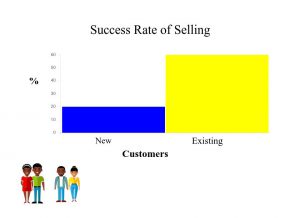It’s time we took some lessons from Lizzo. She’s a mood, a vibe, and a revolution that we could all learn a lot from. But just in case you’re not familiar with pop sensation Lizzo, she does it all: she sings, raps, writes her own songs, and as if that wasn’t enough, she’s a talented flutist.

It’s not just what she does, though – it’s how she does it. Lizzo exudes confidence, self-love, female empowerment, and body positivity. She’s everything you would want to be, and everything you hope your little sisters and daughters grow up to be. So, on the heels of the release of Lizzo’s fourth album entitled “Special”, let’s find out how we can incorporate her energy into our everyday lives to make ourselves feel more…special.
Lizzo Wants You to “Love on Yourself”

While we know that not all bodies are built the same, society doesn’t always make that easy to remember. Celebrities and Instagram filters have given us false and unrealistic expectations of “perfection,” which can be detrimental to the impressionable and confident alike.
But while social media can be a source of distress for many of us, Lizzo is known for using her social media platform to show how comfortable she is in her own skin. She doesn’t hide anything or apologize for herself because she’s not the typical size 0 celebrity.
For example, in February 2021, Lizzo posted a video of herself in her bathroom with her hair wrapped up in a towel, wearing nothing but a sports bra and underwear. In the video, she was caressing her belly and saying, “I started talking to my belly this year. Blowing her kisses and showering her with praises. I used to want to cut my stomach off. I hated it so much. But it’s literally ME. I am learning to radically love every part of myself. Even if it means talking to myself every morning. This is your sign to love on yourself today!”
And on July 23, 2022, Lizzo took to Instagram again, this time wearing a backless dress with spaghetti straps, dancing around in a video captioned, “Embracing my back rolls & showing them love.” Her goal seems to be to normalize all body shapes and sizes, and with every post she’s hopefully that much closer to achieving her goal.
Practice Body Positivity

No matter what your body size or type is, you can be like Lizzo and love the skin you’re in. It can be hard at first to reject what society, Hollywood, and social media are telling us, but you can try to embrace a more body positive outlook. How can you practice body positivity like Lizzo? Here are a few tips:
- Use positive affirmations. Negativity breeds negativity, and conversely, positivity breeds positivity. Give yourself positive encouragement and reminders to stay in a positive mindset.
- Remind yourself that healthy isn’t a size, it’s a lifestyle. Think about how you feel in your own skin, and appreciate and respect what your body can do for you.
- Stop comparing yourself to others. With all the photoshopped and filtered content out there, it’s hard not to compare yourself to others – but once you accept that things aren’t usually what they seem, you’re that much closer to ditching the comparisons.
- Do something nice for yourself. This could be getting a manicure, getting a massage, or just taking a nap! Gifting your body something nice is a form of self-care – you deserve it!
Lizzo’s Push for Inclusivity
Lizzo is not just about loving yourself, though – she’s also on a mission to make the world a more inclusive place. As a self-proclaimed proud, plus-size woman, she saw that there was a need for inclusive shapewear for all shapes and sizes, so she has created a brand that is revolutionizing the shapewear industry called Yitty. When asked about the shapewear, she responded by saying “everyone’s size is just their size. It’s not high, it’s not low. It’s not big, it’s not small. It’s just your size.” Yitty’s sizing ranges from XS to 6X, making it inclusive of all bodies. A follower on social media wrote, “Thanks, it’s the first time I see myself represented like this.”
In another larger-than-life way to be size inclusive, Lizzo has also executive produced a new reality show called “Lizzo’s Watch Out for the Big Grrrls”, which premiered on Amazon Prime on March 25, 2022. The show follows 13 plus-size women as they compete to become Lizzo’s backup dancers at the 2021 Bonnaroo music festival. According to Lizzo, “It was important that I changed the narrative of what a reality competition television show looks like. We don’t always have to be cruel. We can be kind, and don’t have to pit people against each other. I feel like it’s hard enough in the dance world already for girls who look like me, so why would I create that environment in my space? If I have the power to change that, why not change that?”
In a world full of shows like The Bachelor or Love Island where toned, thin, women are prancing around in bikinis all day, Lizzo made it her mission to show and embrace plus-size bodies. And her work on changing norms seems to be slowly working. According to Lizzo, ‘“‘Body positivity,’ ‘self-love,’ and ‘love yourself,’ are very common terms now being used in the media, which was not the case over five years ago. As far as body representation, we got a long way to go, but I’m seeing the change. Big girls have always had value, but I don’t think society has seen the value in bigger bodies.”
Most people don’t have the means to start a shapewear brand, or create a new reality show to prove they want to be inclusive, but we all have the power to do it on a smaller scale. Check out a few ways you can be more inclusive in your daily life:
- Use the right pronouns. If you’re talking to someone and unsure what pronouns to use, ask them! Asking is a great way to show you care and want to be inclusive. Another great way to do this is by adding your pronouns in your email signature. Telling someone your pronouns opens the door for someone who may be shy about declaring their pronouns first.
- Ask questions. This gives someone the opportunity to share their point of view and for you to learn something. Keep an open mind and chances are you’ll learn something new and maybe walk away with a new friend.
- Call out exclusive behavior. Whether people realize it or not, exclusive behavior happens all around us. A store might not have a ramp for wheelchair access, or plus-size customers might find that stores don’t have larger sizes. Be an ally for anyone you see being excluded.
Preach Love
 It’s not everyday the music industry gives us a lyrical genius who can turn their mantras into songs, and send their unique message to the world. The title song off Lizzo’s latest album, “Special”, says:
It’s not everyday the music industry gives us a lyrical genius who can turn their mantras into songs, and send their unique message to the world. The title song off Lizzo’s latest album, “Special”, says:
In case nobody told you today
You’re special
In case nobody made you believe
You’re special
Well, I will always love you the same
You’re special
I’m so glad that you’re still with us
Broken, but damn, you’re still perfect (Perfect)
What if we could all deliver this message to the loved ones, and even the strangers in our lives? There’s no reason not to, so next time you have the chance to preach acceptance, love, and inclusivity, go for it! Go out of your way to give someone a compliment, or post something encouraging on social media today. The internet has enough trolls, so do what Lizzo would do and build someone up, instead of tearing them down.
There has never been, nor will there probably ever be, another Lizzo. Her positive, loving, inclusive personality is one that is to be treasured and emulated. The next time you’re in a situation and don’t know what to do, ask yourself “What Would Lizzo Do?” She truly is special and she’s here to tell you that you are, too!













